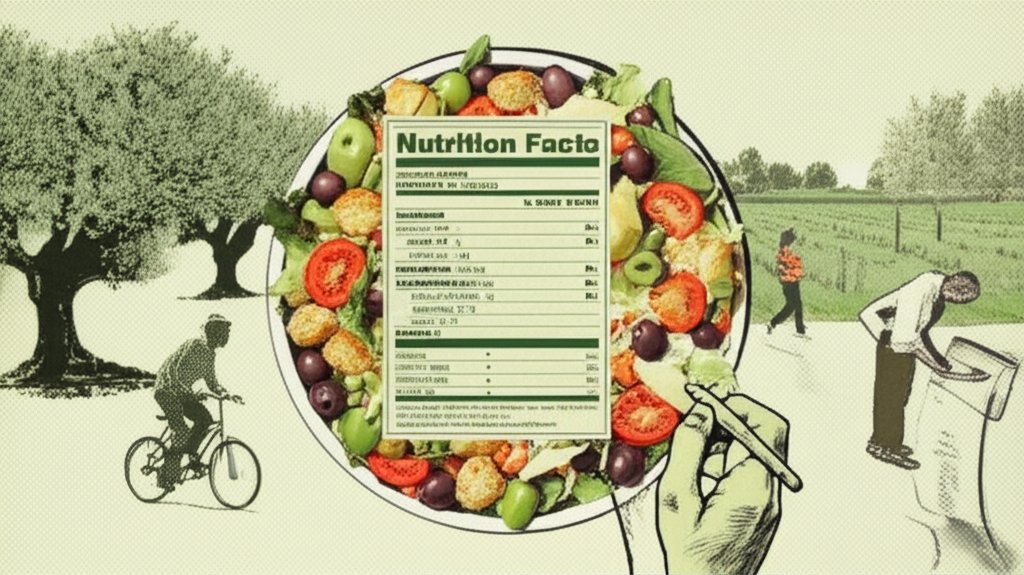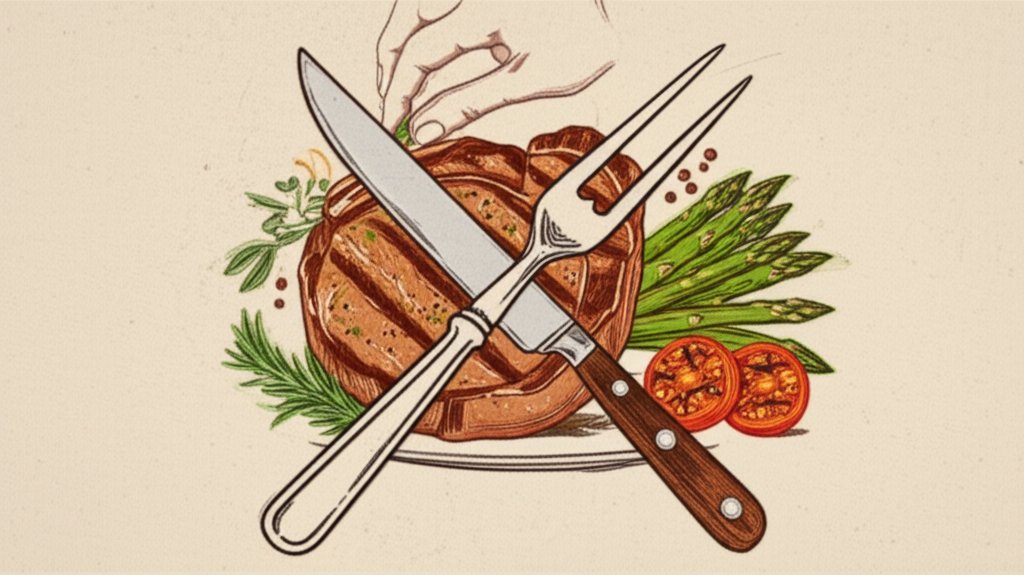Craving a juicy steak but also trying to keep an eye on your health? Understanding the ny strip steak nutrition facts is key to making informed choices. This guide breaks down everything you need to know about this popular cut, from calorie counts to protein content, and how it fits into a balanced diet.
At a glance:
- A 5-ounce serving of NY strip steak has about 294 calories.
- It’s packed with protein (around 40g per 5-ounce serving).
- Relatively low in fat compared to some other steak cuts.
- Provides essential nutrients like selenium, potassium, and iron.
- Portion control is key to enjoying it as part of a healthy eating plan.
What Is a NY Strip Steak, Anyway?
The New York strip steak, also known as a strip steak, club steak, or Kansas City strip, is a cut of beef from the short loin. It’s known for its tenderness and good marbling (the intramuscular fat that contributes to flavor and juiciness). It generally has a tighter texture than a ribeye but still offers a satisfying steak experience.
The Complete NY Strip Steak Nutrition Breakdown
Here’s a detailed look at the nutritional content of a 5-ounce (140g) serving of NY strip steak:
- Calories: 294
- Total Fat: 13g (17% Daily Value)
- Saturated Fat: Data not provided in context. Note: will vary based on grade and trimming
- Trans Fat: Data not provided in context
- Cholesterol: 150mg (50% Daily Value)
- Sodium: 97mg (4% Daily Value)
- Total Carbohydrate: 0g (0% Daily Value)
- Dietary Fiber: Data not provided in context
- Total Sugars: Data not provided in context
- Includes Data not provided in context Added Sugars: Data not provided in context
- Protein: 40g (80% Daily Value)
- Vitamin C: Data not provided in context
- Vitamin D: Data not provided in context
- Iron: Data not provided in context
- Calcium: Data not provided in context
- Potassium: 300mg (6% Daily Value)
- Phosphorus: Data not provided in context
The % Daily Value (DV) tells you how much a nutrient in a serving of food contributes to a daily diet. 2,000 calories a day is used for general nutrition advice.
Macronutrient Ratio: - Protein: 58%
- Fat: 42%
- Carbohydrates: 0%
Composition: - Water: 62.1%
- Protein: 28.6%
- Fat: 9.3%
- Carbohydrates: 0%
NY Strip vs. Other Steaks: A Calorie Comparison
How does NY strip stack up against other popular steak cuts?
| Steak Cut | Serving Size | Calories | Fat (g) | Protein (g) |
|---|---|---|---|---|
| NY Strip | 3 oz (85g) | 155 | 6 | 23 |
| Ribeye | 3 oz (85g) | 246 | 17 | 22 |
| Filet Mignon | 3 oz (85g) | 179 | 8 | 25 |
| Sirloin | 3 oz (85g) | 136 | 4 | 24 |
| As you can see, NY strip offers a good balance of flavor and leanness compared to the richer ribeye, but it has slightly more fat than sirloin. |
The Protein Powerhouse: Benefits of Protein in NY Strip
NY strip steak is an excellent source of protein, delivering a significant portion of your daily needs in a single serving. Protein is essential for:
- Muscle Building and Repair: Protein provides the amino acids your body needs to build and repair muscle tissue, especially important after exercise.
- Satiety: Protein helps you feel full and satisfied, making it easier to manage your weight and avoid overeating.
- Overall Health: Protein plays a crucial role in numerous bodily functions, including hormone production, enzyme activity, and immune system support.
Vitamins and Minerals in NY Strip: Beyond the Basics

While protein is the headliner, NY strip steak also provides valuable micronutrients:
- Selenium: This mineral is a powerful antioxidant that helps protect against cell damage and supports thyroid and cardiovascular health. A serving of NY strip provides a significant portion of your daily selenium needs.
- Iron: Important for carrying oxygen in the blood, preventing anemia, and supporting energy levels.
- Potassium: An electrolyte that helps regulate blood pressure, muscle contractions, and nerve function.
It’s worth noting that while red meat offers these benefits, balance is key. You can easily track your intake with tools like the Olive Garden Salad Nutrition Info guide when planning sides and other meals.
What About Cholesterol? Addressing Concerns
Red meat, including NY strip, contains cholesterol. While dietary cholesterol doesn’t impact blood cholesterol for everyone, it’s a factor for some individuals. Here’s what to keep in mind:
- Portion Control: Eating smaller portions of NY strip can help minimize cholesterol intake.
- Cooking Method: Choose healthier cooking methods like grilling, baking, or broiling instead of frying.
- Balanced Diet: Focus on a diet rich in fruits, vegetables, whole grains, and lean protein sources alongside moderate red meat consumption.
NY Strip Steak: A Fit for Low-Carb Diets
If you’re following a low-carb diet like keto or Atkins, NY strip steak can be a great option.
- Zero Carbs: It contains no carbohydrates, making it a perfect fit for restricting carb intake.
- High Protein: The high protein content helps promote satiety and preserve muscle mass during weight loss.
- Versatile: It can be prepared in numerous ways to suit your taste and dietary needs.
Choosing the Right Cut: Grade Matters
The grade of NY strip steak affects its fat content, tenderness, and overall quality. Here’s a quick rundown:
- USDA Prime: The highest grade, with abundant marbling and the most flavor. It will also have the highest fat content.
- USDA Choice: A good balance of quality and price, with less marbling than Prime but still flavorful. This is what most people will find available at their local grocery store.
- USDA Select: The leanest grade, with minimal marbling and less tenderness.
Cooking Methods: Impacting Nutrition and Taste
How you cook your NY strip steak can influence its nutritional profile and flavor:
- Grilling: A great option for a smoky flavor with minimal added fat.
- Pan-Searing: Creates a delicious crust while keeping the inside juicy. Use a healthy oil like olive oil sparingly.
- Broiling: A quick and easy way to cook NY strip in the oven.
- Sous Vide: Ensures even cooking and maximum tenderness.
- Smoking: Adds a unique flavor profile, but be mindful of smoke exposure.
Portion Control: The Key to Enjoying NY Strip Responsibly
While NY strip steak offers nutritional benefits, portion control is crucial. A recommended serving is typically 3-4 ounces. Overdoing it can lead to excessive calorie and fat intake. Consider using a food scale to accurately measure your portions.
Common Misconceptions About Red Meat

Let’s clear up some common myths surrounding red meat consumption:
- Myth: Red meat is inherently unhealthy.
- Fact: Moderate consumption of lean red meat can be part of a balanced diet.
- Myth: All saturated fat is bad for you.
- Fact: While excessive saturated fat intake can raise cholesterol levels, some saturated fat is necessary for bodily functions.
- Myth: Red meat always leads to weight gain.
- Fact: Weight gain is primarily determined by overall calorie intake, not just the consumption of red meat.
- Myth: You need to completely eliminate red meat for optimal health.
- Fact: Many people can safely enjoy red meat in moderation as part of a varied diet.
Is NY Strip Steak Right for You? Considerations
NY strip steak can be a nutritious and delicious addition to your diet, but it’s important to consider your individual needs and preferences.
- Dietary Restrictions: If you have dietary restrictions or health conditions, consult with a doctor or registered dietitian to determine if NY strip steak is right for you.
- Personal Preferences: If you dislike the taste or texture of red meat, there are plenty of other protein sources to choose from.
- Ethical Considerations: If you have ethical concerns about eating meat, consider plant-based alternatives or sustainably sourced options.
Making the Most of Your NY Strip Steak: Tips and Tricks
- Choose Quality: Opt for USDA Choice or Prime grades for the best flavor and tenderness.
- Trim Excess Fat: Trim away any excess fat around the edges of the steak before cooking.
- Marinate: Marinating adds flavor and can help tenderize the meat.
- Don’t Overcook: Use a meat thermometer to ensure your steak is cooked to your desired level of doneness.
- Let it Rest: Allow the steak to rest for a few minutes after cooking to allow the juices to redistribute.
Frequently Asked Questions About NY Strip Steak Nutrition
- How many calories are in a 6 oz NY strip steak? Approximately 353 calories, depending on the grade and trimming.
- Is NY strip steak good for weight loss? It can be, as it’s high in protein and can promote satiety. However, portion control is key.
- Is NY strip steak healthier than ribeye? Generally, yes. It has less fat and fewer calories than ribeye.
- What are the best side dishes to serve with NY strip steak? Consider healthy options like roasted vegetables, a salad Otter Pops Nutritional Information won’t pair well, but something savory and fresh works.
- Can I eat NY strip steak every day? While it’s possible, it’s generally recommended to vary your protein sources and eat red meat in moderation.
Beyond the Plate: Sustainable Sourcing
Consider the environmental impact of your food choices. Look for sustainably sourced beef that prioritizes animal welfare and responsible land management. Local farmers markets and butchers are often good sources for finding sustainable options.
Your Next Steps: Enjoying NY Strip Steak Responsibly
Understanding the ny strip steak nutrition facts empowers you to make informed choices about incorporating this delicious cut into your diet. Prioritize portion control, choose leaner cuts and healthy cooking methods, and balance your meals with plenty of fruits, vegetables, and whole grains. By doing so, you can savor the flavor and nutritional benefits of NY strip steak while maintaining a healthy and balanced lifestyle.
- Why Glass Boxes for Lunch Are Trending for Meal Prep - December 17, 2025
- Bento Box Glass Offers Practical, Eco-Friendly Meal Storage - December 16, 2025
- The Best Bento Box Price For Your Perfect Packed Lunch - December 15, 2025










